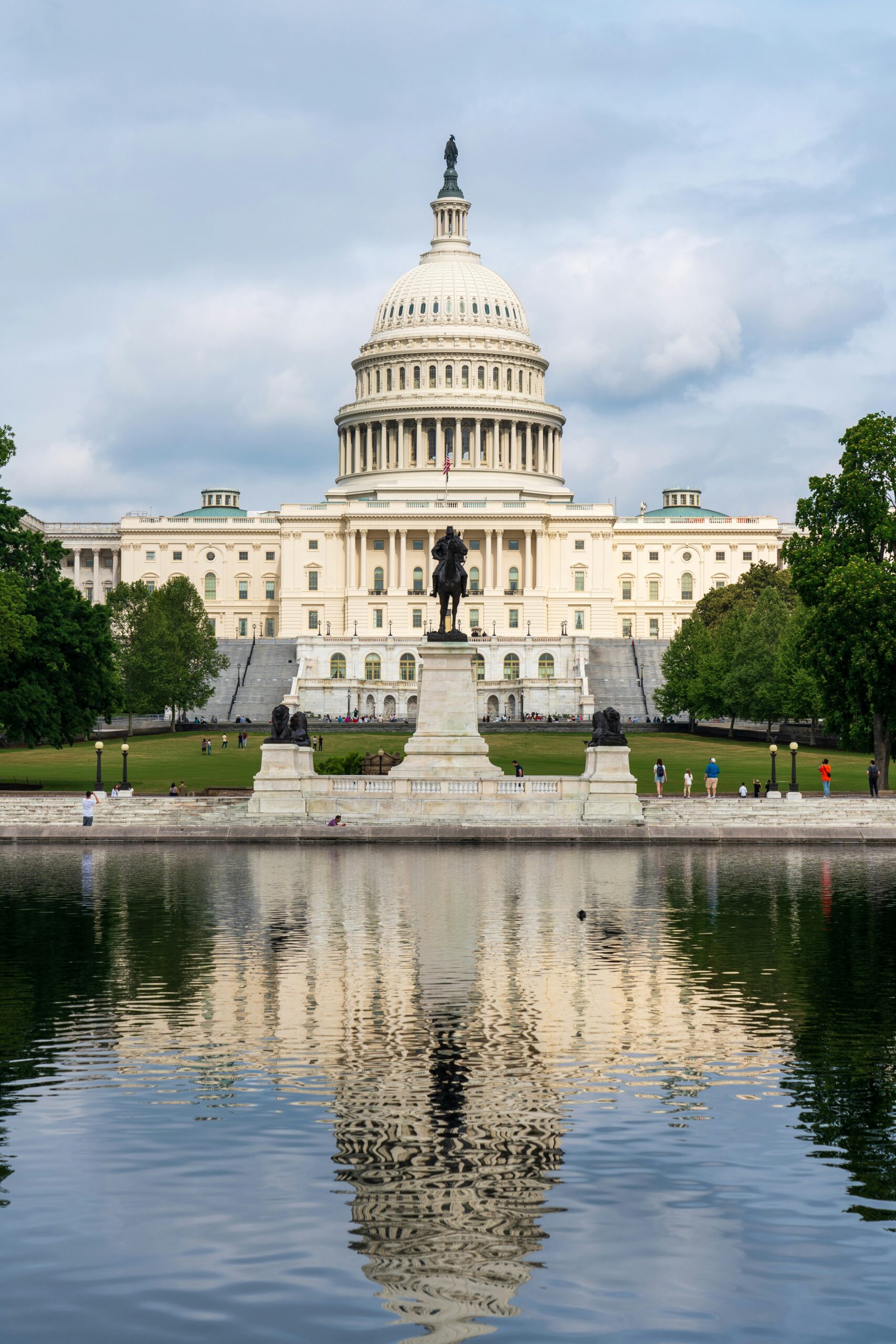Washington Gridlock: US Government Shuts Down as Trump, GOP Face Off Against Democrats Over Funding and Healthcare
By Ethan Brooks |

It’s official—America’s federal government ground to a partial halt at midnight on October 1, 2025, after a high-stakes standoff in Congress left funding bills dead in the water. For the first time since 2019, non-essential services are furloughed, federal workers are staring at delayed paychecks, and the blame game is already in overdrive. President Donald Trump, fresh off threats to wield the shutdown like a sledgehammer against Democratic priorities, called it a chance for “irreversible” cuts to programs he deems wasteful. Democrats, led by Senate Minority Leader Chuck Schumer and House Minority Leader Hakeem Jeffries, fired back, accusing Republicans of sabotaging healthcare access for millions just to score political points. As the clock ticks on what could be a prolonged impasse—the longest shutdown lasted 35 days under Trump in 2018-19—this isn’t just partisan theater; it’s a real squeeze on everyday Americans, from park rangers to small business owners. What’s at stake, who’s pointing fingers, and how might this play out? Let’s break it down, starting with the spark that lit the fuse.
The Breakdown: What Happened in the Final Hours
The drama peaked Tuesday evening as the fiscal year deadline loomed. Republicans in the House had muscled through a “clean” continuing resolution (CR)—a stopgap bill to keep lights on at 2025 spending levels through November 21—hoping to buy time for bigger budget battles. But in the Senate, where 60 votes are needed to overcome a filibuster, the measure stalled at 55-45, with just three Democrats (Sens. John Fetterman of Pennsylvania, Catherine Cortez Masto of Nevada) and independent Angus King of Maine crossing the aisle. Democrats countered with their own CR, extending funding only through October’s end but tacking on over $1 trillion in healthcare boosts, including protections against Medicaid cuts baked into Trump’s “One Big Beautiful Bill Act” (OBBBA). That one bombed 47-53, with zero GOP support.
Senate Majority Leader John Thune (R-SD) pinned it on Democrats’ “left base,” telling Fox News the shutdown was “unnecessary” if they’d just swallow the clean bill. Schumer shot back from the Capitol steps: “Republicans are plunging us into chaos rather than fixing their healthcare crisis.” By midnight, the White House website had flipped to a stark “Democrats Have Shut Down the Government” page, complete with a ticking shutdown clock. Trump, speaking to reporters earlier, didn’t mince words: “We can do things during the shutdown that are irreversible… cutting vast numbers of people out, cutting programs they like.” He later walked it back slightly, insisting it was about rooting out “fraud, waste, and abuse.”
This isn’t ancient history—it’s the 15th shutdown since 1980, per the Bipartisan Policy Center, and the first full one in years because none of the 12 annual appropriations bills cleared both chambers. At root? A clash over OBBBA’s Medicaid trims and the expiration of pandemic-era ACA premium tax credits, which could spike costs for 3.1 million more Americans come 2026. Democrats won’t budge without safeguards; Republicans call it leverage for separate talks. As economist Gerald Epstein of UMass-Amherst told Al Jazeera, “Will the Dems cave? Probably not for a while.”
Trump’s High-Stakes Gamble: Shutdown as Leverage or Liability?
The President’s Playbook: Cuts, Chaos, and Calculated Risks
Donald Trump has never shied from shutdowns—they’re practically his brand of brinkmanship. Remember 2018-19? That 35-day saga over border wall funding cost $3 billion in GDP and furloughed 800,000 workers. Now, with GOP trifecta control (White House, House, Senate), he’s doubling down, hinting at mass layoffs for “Democrats” in the bureaucracy and redirecting funds to immigration enforcement. White House officials floated using OBBBA’s $1 billion Pentagon slush fund for border ops, though experts like immigration analyst David Towner doubt it’ll move the needle much.
Critics, including former Bush ethics lawyer Richard Painter, slammed it as “strong-arm tactics” bordering on illegal—firing civil service-protected workers requires congressional OK. Trump’s even mused about permanent RIFs (reductions in force) for discretionary programs, per the Office of Management and Budget. But here’s the rub: Shutdowns historically boomerang on the party in power. Polls from past dust-ups show public fury fading slower for the president. As one X user quipped amid the morning chaos, “Waking up to a government shutdown is like waking up on Christmas morning”—sarcasm from conservatives cheering smaller government, but polls suggest most Americans just want the lights back on. (Post from @tinleyharrier)
Democratic Counterpunch: Healthcare as the Hill to Die On
Democrats aren’t playing defense—they’re framing this as GOP cruelty. Kamala Harris blasted it on X: “Republicans are in charge… This is their shutdown.” Sen. Patty Murray (D-WA) called out the “refusal to negotiate,” while Rep. Jasmine Crockett (D-TX) labeled it “chaos over families.” Their line in the sand? No CR without reversing OBBBA’s Medicaid hits, which could shutter rural hospitals and yank coverage from working folks. Jeffries echoed Schumer: “We’re ready for bipartisanship—if they bring a credible partner.”
It’s a savvy pivot, tying the shutdown to pocketbook pain amid rising premiums. But with Republicans holding the levers, Dems risk looking obstructionist if talks drag. As X chatter heats up—one user fumed, “Do not cave to even one Democratic demand… Call their bluff” (@wake_up_girl_3)—the pressure’s on both sides to blink.
Day One Disruptions: Who’s Feeling the Pinch Already?
Essential vs. Everything Else: The Uneven Toll
Call it a “shutdown” in name only—about 2.1 million “essential” workers (think military, TSA screeners, border patrol) clock in unpaid, keeping skies safe and borders patrolled. Social Security checks? They flow uninterrupted to 74 million retirees and disabled folks, funded by payroll taxes outside annual budgets. Medicare and veterans’ care hold steady too. SNAP (food stamps) and SSI benefits? Good through December.
But the hits land hard elsewhere. The Bureau of Labor Statistics skips its October 3 jobs report, rattling markets. Small business loans freeze, FHA mortgage insurance halts, and WIC (nutrition for moms and kids) stops new enrollments. National parks? Expect closures at 433 sites—gates locked, rangers minimal, trash piling up like in 2018’s mess. Smithsonian museums limp on ’til October 6 with reserve funds, then dark. Travel? Brace for TSA lines snaking longer (unpaid screeners mean burnout) and Amtrak chugging fine, but flights could snag. Passports and visas? Still processing, per State Department.
Furloughed? That’s 800,000+ pink-slipped feds, from IRS auditors to EPA scientists, facing IOUs for back pay—eventually. Unions like Social Security Workers United are howling about a “morale crisis,” worsened by recent DOGE-inspired layoffs. And if it stretches? That COLA for Social Security, due mid-October, might lag without BLS data. The travel industry alone could bleed $1 billion weekly, per US Travel Association.
Voices from the Trenches: Feds, Travelers, and Everyday Folks
On X, the morning after buzzed with gallows humor and gripes. One retiree posted a haiku: “Happy shutdown day… Sometimes nice being retired” (@WayneAndMatsuo, with a pic of their cat Matsuo pondering the news). A fed worker vented: “Marco Rubio realizing he’s now the janitor after shutdown” (meme of the senator mopping floors, @chuckyblalock). Broader sentiment? Split down party lines, but exhaustion’s bipartisan—one analyst noted, “Who the public blames is up for grabs.”
Echoes of History: Lessons from Shutdowns Past and What’s Next
This isn’t Jimmy Carter’s world anymore—shutdowns as we know them stem from a 1980 DOJ memo deeming unappropriated spending illegal. Pre-that, agencies just kept humming. Trump’s 2019 wall fight ended in compromise, but not without LaGuardia chaos from no-show controllers. Today’s twist? DOGE-era efficiency cuts make the pain sharper, with agencies prepping for “orderly” wind-downs.
Endgame? Thune’s eyeing a Wednesday revote on the GOP CR, banking on more Dem defections. Trump, per Politico, is shielding priorities like defense and borders with executive maneuvers. But experts like Epstein warn of stalemate: “Impossible to predict what Trump will do.” If it drags, expect lawsuits over firings, market jitters (Dow dipped pre-dawn), and voter backlash in 2026 midterms.
Beyond the Beltway and How to Weather It
In a nation already raw from inflation and division, this shutdown underscores Washington’s dysfunction: Trillions in play, yet kids go hungry via WIC delays, vets wait on claims, and parks turn into ghost towns. It’s a reminder that “full shutdown” hits hardest on the vulnerable—feds without pay, businesses stalled, travelers stranded. Yet, as one X post captured the absurdity, “A Government Shutdown” as the punchline to “what’s healthy?” (@Zepeda_3D).
For now, check USA.gov for agency plans, stash cash if you’re a fed, and skip the parks. But the real fix? Compromise. As talks sputter, one thing’s clear: In DC’s echo chamber, the loudest voices drown out the quiet pleas for normalcy. What’s your take—Trump’s tough love or Dems’ principled stand? Sound off below, and keep an eye on Capitol Hill. This story’s just revving up.




